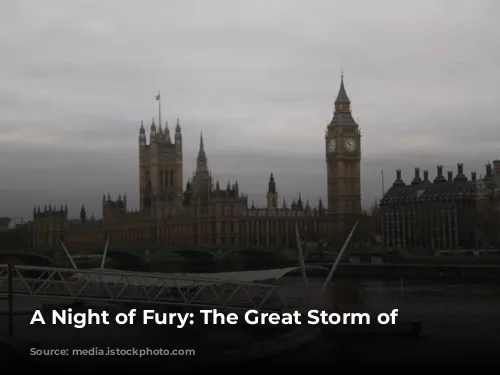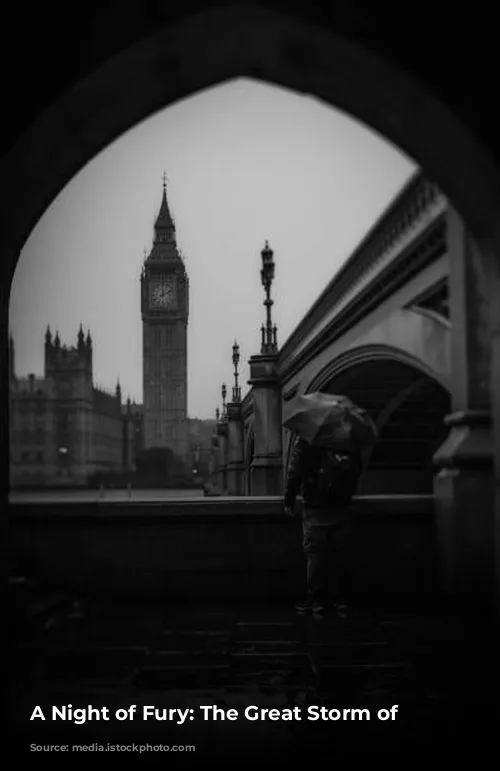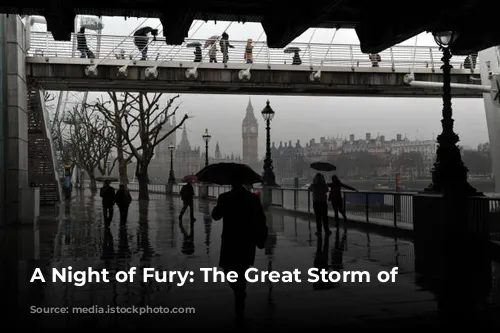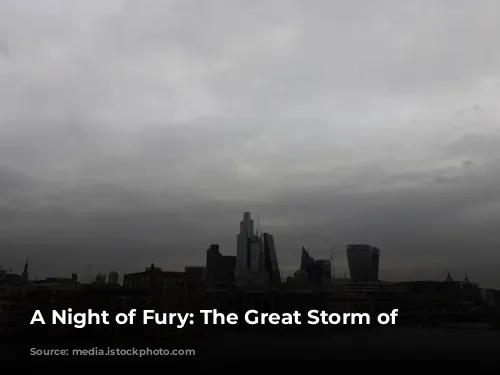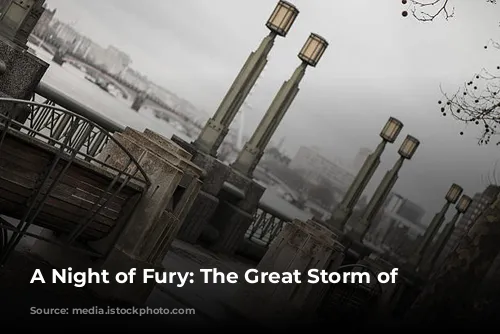The Great Storm of 1987 unleashed its fury on the United Kingdom, leaving a trail of devastation and tragedy in its wake. Winds whipped across the land at a terrifying speed, reaching up to 100 miles per hour, causing widespread destruction and claiming the lives of 18 people. This natural disaster impacted almost every aspect of life, disrupting transportation, communication, and power supply.
Millions of trees were uprooted, blocking roads and railways, bringing transportation to a standstill. Power lines and telephone lines were ripped apart, plunging thousands of homes into darkness for over a day. Buildings were battered by strong winds and falling trees, adding to the widespread chaos. The storm’s impact was particularly devastating along the coast, with numerous small boats destroyed and even a ship at Dover blown over.
The storm’s ferocity was amplified by the fact that it struck during the night, catching most people unprepared. Experts believe that the death toll could have been much higher had the storm hit during daylight hours, when people would have been more aware of the danger.
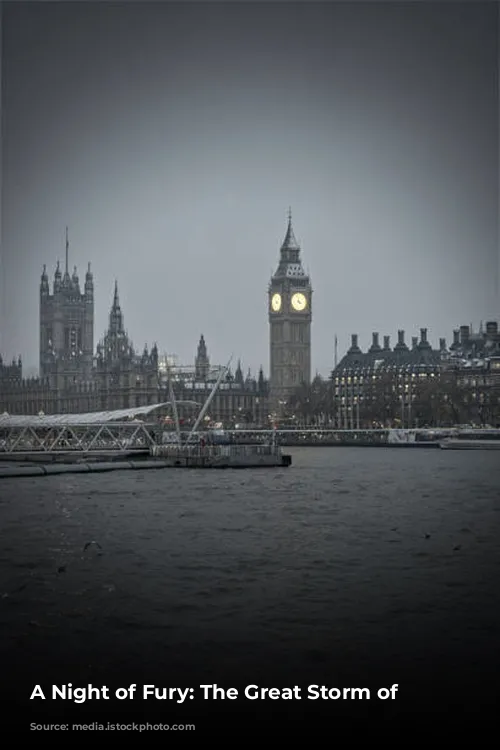
The Unpredictable Path of the Storm
The storm’s arrival was somewhat unexpected, despite early warnings from forecasters. Initially, predictions indicated severe weather conditions over a large part of the UK. However, as the storm approached, weather models shifted their predictions, suggesting the storm would pass south of England, grazing the south coast.
On the afternoon of 15th October, the weather appeared calm across much of the UK, offering little hint of the impending catastrophe. However, a depression was brewing over the Bay of Biscay. This seemingly innocuous weather pattern was about to unleash its fury on the unsuspecting nation.
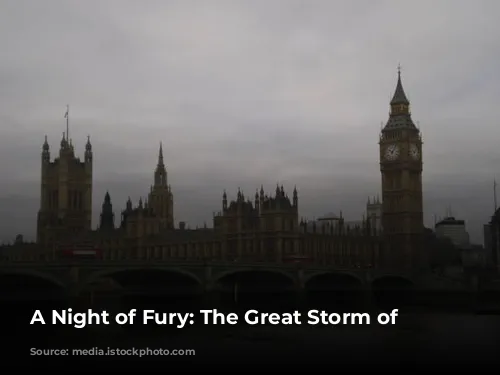
A Rapidly Developing Storm
The depression intensified rapidly, unleashing powerful gales that swept across the English Channel. The first gale warnings were issued at 6:30 am on 15th October, followed by warnings of severe gales just four hours later.
By midday, the depression was centered near 46° N, 9° W, its depth reaching 970 mb. As the day wore on, it moved northeast, deepening further and gaining strength. By 6 pm, it had moved to 47° N, 6° W, with a central pressure of 964 mb.
The intensity of the storm continued to build. At 10:35 pm, wind speeds were forecast to reach Force 10. By midnight, the depression had reached the western English Channel, its central pressure plummeting to 953 mb. By 1:35 am on 16th October, the warnings were upgraded to Force 11, indicating a severe storm was underway. The depression moved rapidly northeast, reaching the Humber estuary at around 5:30 am.
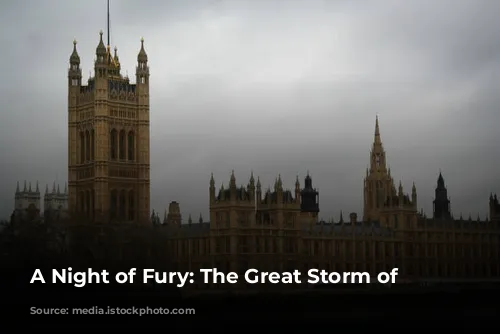
Miscommunication and Misinformation
During the evening of 15th October, radio and television weather forecasts mentioned strong winds but focused on heavy rain as the main threat, downplaying the severity of the impending winds. By the time most people went to bed, the exceptionally strong winds had not been highlighted in national broadcasts.
While warnings of severe weather were issued to various agencies and emergency authorities, the lack of public awareness about the storm’s true intensity left many unprepared. Perhaps the most crucial warning came from the Met Office to the Ministry of Defence, warning that the storm’s impact might necessitate military assistance.
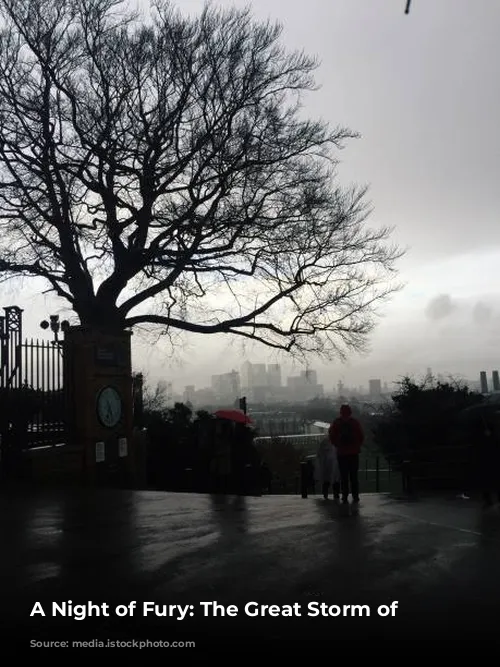
The Storm’s Impact: A Tale of Destruction
In southeast England, where the storm’s fury was most intensely felt, gusts of 70 knots or more lashed the region for several hours. The wind direction shifted from southerly to south-westerly, contributing to the widespread damage.
The devastation was widespread, with the storm causing significant structural damage to buildings and uprooting vast numbers of trees. The strength of the winds was unprecedented, exceeding even the oldest residents’ memories of previous storms.
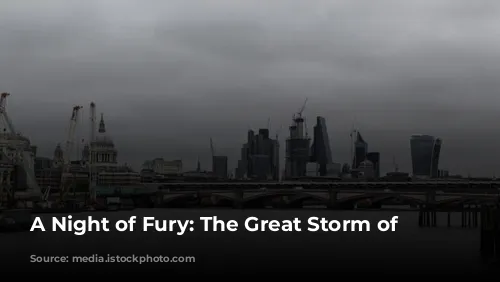
Measuring the Storm’s Intensity
The Great Storm of 1987 was a record-breaking event, surpassing the intensity of any storm in recent memory. Wind speeds reached astonishing levels, with the highest recorded gust reaching an estimated 119 knots (61 m/s) at the Quimper coastguard station in Brittany.
The highest measured wind speed was a gust of 117 knots (60 m/s) at Pointe du Roc, near Granville, Normandy. In the UK, the strongest gust was recorded at Shoreham on the Sussex coast, reaching 100 knots, with gusts exceeding 90 knots at several other coastal locations.
Even well inland, wind speeds were remarkably high. The London Weather Centre recorded 82 knots at 2:50 am, while Gatwick Airport recorded an 86 knot gust at 4:30 am, leading to its closure.
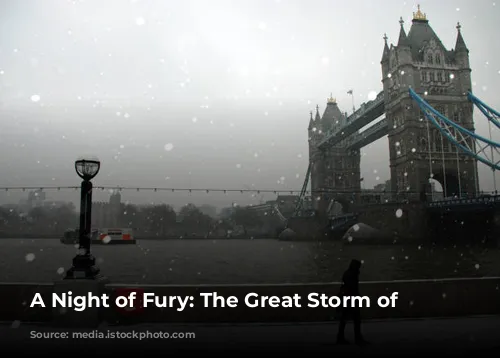
The Aftermath: Lessons Learned
The Great Storm of 1987 had a profound impact on the UK, exposing the vulnerability of infrastructure and highlighting the importance of accurate weather forecasting. Despite the storm’s unexpected intensity, the Met Office was not alone in underestimating its severity. The storm served as a wake-up call, prompting significant improvements in weather forecasting, including enhancing observational coverage of the atmosphere over the ocean, refining computer models, and improving communication strategies.
The storm’s legacy continues to shape the UK’s approach to weather preparedness. It serves as a stark reminder of the power of nature and the importance of accurate forecasting and communication in protecting lives and property. While the Great Storm of 1987 remains a defining moment in the nation’s history, it also serves as a catalyst for improvement, leaving behind a legacy of improved preparedness and a renewed appreciation for the unpredictable nature of weather.


